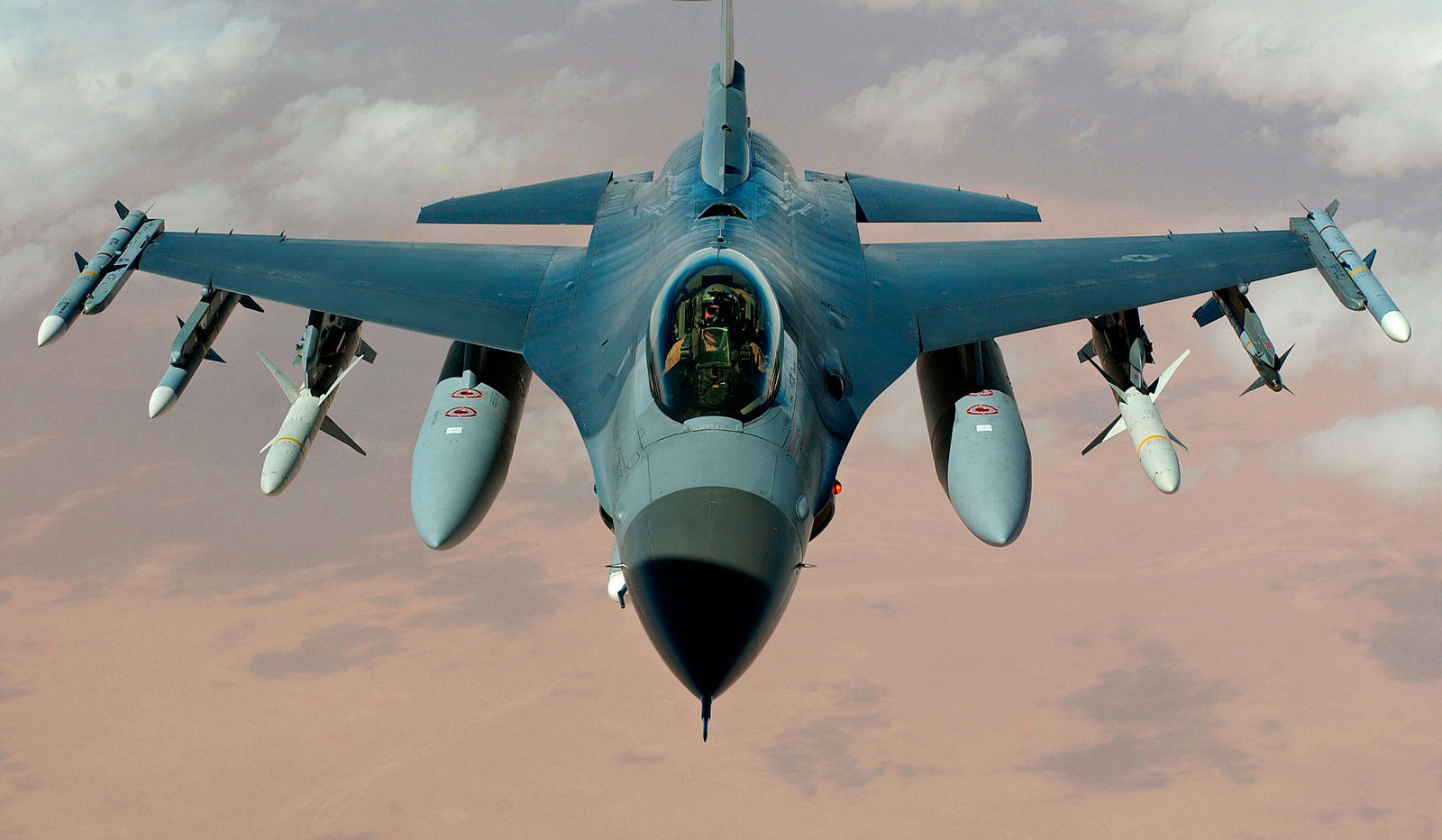“You Mean They Can Bomb Us?” Addressing the Impact of Neutrality Law on Defense Cooperation
When does customary international law permit an adversary to attack the U.S. in a neutral defense partner's territory?

Published by The Lawfare Institute
in Cooperation With

The 2018 U.S. National Defense Strategy identifies “strengthening alliances as we attract new partners” as a crucial line of effort. The United States commonly expresses its defense cooperation arrangements through treaties granting the U.S. the right to station forces abroad, such as in South Korea; the right to transit foreign national airspace, such as in Uzbekistan; and the right to pre-position materiel, such as in Poland. In peacetime, such treaty rights enable the U.S. to project force and deter potential adversaries. During an international armed conflict (IAC), these rights facilitate an increased U.S. operational tempo by, for example, reducing the time between command decision and tactical execution. Conversely, by hosting U.S. forces, equipment and materiel during an IAC, a U.S. defense partner complicates its own potential neutrality. When a defense partner allows the U.S. to use its territory—including its airspace and territorial sea—to conduct operations that seriously and immediately threaten the adversary, that state risks the adversary lawfully piercing its sovereignty to attack U.S. forces, equipment and materiel. The proximity of U.S. targets to partner state defense installations means such attacks will almost certainly damage the partner state’s facilities and injure or kill its personnel.
In this post, I briefly address neutrality under customary international law (CIL) and explain when CIL permits an adversary to attack the U.S. in a neutral defense partner’s territory. I do not address my previous work on the intersection of neutrality, treaty law and the law of state responsibility, which can be found here. My analysis assumes that the defense partner chooses to honor its treaty obligations to the U.S. rather than its neutrality obligations to the adversary. However, because U.S. adversaries “employ various forms of coercion, activism, or economic levers to influence host nations or allies to limit cooperative security activities with the United States and [U.S.] access to ports, facilities, airfields and other infrastructure,” a defense partner may instead choose to breach its treaty obligations because it assesses the potential consequences of violating the law of neutrality to be unacceptable.
Neutrality law regulates the relationship between states fighting in an IAC (“belligerents”) and states not participating in the conflict (“neutrals”). The core of neutrality law is reflected in Hague V and Hague XIII. Although some scholars may disagree, Hague V and Hague XIII generally reflect CIL binding on all states. Under CIL, neutrals may not engage in hostilities against the belligerents, advantage one belligerent over the other, provide war materials to the belligerents, or support the belligerents in other ways such as by providing intelligence. Neutrals also must act to prevent belligerents from moving forces, munitions or supplies through neutral territory and airspace; and seize and intern belligerent forces, vehicles, aircraft and equipment present in their territory, airspace or waters unlawfully. Belligerents, in turn, principally must not attack neutrals or operate in neutral territory, territorial seas or airspace.
Despite broad historical claims to the contrary and sporadic state practice contravening the requirements of neutrality, international law does not recognize “qualified neutrality,” “benevolent neutrality” or “non-belligerency” as an intermediate status that a state may lawfully claim for itself. If the U.N. Security Council, acting under Article 39, authoritatively identifies one party to an IAC as the aggressor and calls upon member states, under Article 41, to take nonforcible measures to restore international peace and security, member states are legally permitted to forsake their impartiality and support the nonaggressor state. In fact, Article 2(5) and Article 25 require member states to do so. Only in this very limited circumstance may a state rightfully assert itself as a “non-belligerent” and exhibit “qualified” or “benevolent” neutrality. States may not legitimately substitute their judgment for that of the Security Council or make their own subjective determination as to which belligerent deserves aid. Where the Security Council does not designate an aggressor and call for enforcement measures, the law is binary: States are either belligerents or neutrals.
A state’s neutrality ends in one of three ways: when the neutral enters the IAC as a belligerent; when a belligerent attacks the neutral, or when a belligerent declares that it and the neutral are engaged in an IAC. Absent a belligerent attack or declaration, a state with cooperative treaty obligations to the United States, such as Latvia or Hungary, continues to be recognized as a neutral unless the nature and quantity of the aid it provides is sufficient to justify a conclusion that it has joined the IAC as a belligerent. A neutral U.S. defense partner is most acutely in jeopardy when it is unwilling or unable to prevent U.S. operations in its territory from seriously and immediately threatening the opposing belligerent. In that case, the neutral risks being materially harmed by military strikes against U.S. forces, equipment and materiel located in its territory.
Belligerents and neutrals must consider two regimes of international law when thinking about engaging each other forcibly. Both the jus ad bellum and the law of neutrality govern the resort to force between belligerents and neutrals during an IAC. Under the U.N. Charter, Article 2(4), states must “refrain in their international relations from the threat or use of force.” The charter recognizes only two scenarios in which states may permissibly use force: pursuant to a Security Council authorization under Article 42, or in the exercise of a state’s inherent right of individual or collective self-defense against an armed attack. The latter justification is recognized in Article 51. Generally, a neutral aiding a belligerent may not be attacked as a co-belligerent under the jus in bello unless the gravity of the neutral’s conduct effectively renders it a party to the IAC. Nor may a belligerent respond in self-defense to a neutral aiding its adversary. Providing supplies, logistics and similar assistance does not constitute an armed attack. However, neutrality law does not require a belligerent to sit idly while the other belligerent uses neutral territory to conduct operations that immediately and seriously endanger its security.
When circumstances permit, an aggrieved belligerent must both demand the neutral terminate the adversary’s operations in neutral territory and allow the neutral a reasonable opportunity to meet its prevention obligation. This is similar to the general requirement that a state give notice before engaging in countermeasures. But, if no feasible and timely alternatives are available and the neutral is unwilling or unable to prevent use of its territory, a belligerent suffering (or about to suffer) serious and immediate harm may use necessary and proportionate force against the opposing belligerent in neutral territory to avert the harm. A belligerent’s right to use force against an opposing belligerent unlawfully operating in neutral territory is frequently overlooked as an exception to the inter-state prohibition on the use of force.
To illustrate this point, imagine a situation in which, before the North Atlantic Council invokes Article 5, Hungary fails to prevent U.S. use of its territory to rearm aircraft striking Russia. Russia will, of course, veto any Security Council resolution finding it to be the aggressor and calling for enforcement measures under Chapter VII. If Hungary either previously disregarded Russian demands to stop the U.S. operations or lacks the ability to take preventive action in time, Russia will likely conclude that there are no feasible alternative means by which to protect itself. Russia could then bomb U.S. combat aircraft located at Hungarian airfields, thereby piercing Hungary’s sovereignty. These strikes would be lawful so long as the Russian attacks are directed solely against U.S. targets and they do not exceed the amount of force reasonably necessary to stop the U.S. threat. Although the Russian operations occur in Hungary’s sovereign territory, they are not an armed attack on Hungary. Hungary has no right to respond against Russia in self-defense under either Article 51 of the U.N. Charter or CIL. Russia’s use of necessary and proportionate force in Hungarian territory is permissible under CIL. Therefore, the wrongfulness of the attacks under Article 2(4) and its CIL counterpart is precluded.
Some commentators believe otherwise. They erroneously hold that a belligerent’s use of force to restore the inviolability of neutral territory is an armed attack to which the neutral may respond in self-defense. International law does not support this conclusion. Unfortunately, international law does not comprise perfectly interlocking rules that always seamlessly align with states’ interests. Where its rules are in tension, international law seeks to achieve balance between competing interests.
CIL recognizes a belligerent’s right to use force against an opposing belligerent unlawfully using neutral territory. But, that right is narrowly circumscribed to balance respect for the neutral’s sovereignty, the peacetime prohibition on the inter-state use of force and the aggrieved belligerent’s right to protect itself. Exercise of the right is fundamentally conditioned on the neutral state’s unwillingness or inability to meet its prevention obligation under CIL. In addition, the opposing belligerent’s use of neutral territory must seriously and immediately endanger the aggrieved belligerent’s security, not merely place it at a disadvantage. Finally, the belligerent must not have available to it any feasible and timely alternative to using force to protect itself from serious harm. Ascribing to an inactive or incapable neutral a right of self-defense against a belligerent exercising its right of self-help misunderstands the relationship between neutrality law and Articles 2(4) and 51 (and their CIL counterparts) and encourages violations of international law. If the law is understood to prohibit an aggrieved belligerent—acting in lieu of a neutral that either cannot or will not meet its prevention obligation—from using force to expel the offending belligerent and preserve the inviolability of neutral territory, what discourages a belligerent from invading and conducting offensive operations from neutral territory?
Not all U.S. defense partners are equally at risk. Forcible action against a U.S. defense partner located far from the theater of conflict and playing no role in the IAC is not legally justifiable even though the partner breaches its CIL neutrality obligations. U.S. operations under such circumstances pose no serious and immediate risk to the adversary. The probability that U.S. combat operations directly harmful to Russia, for example, would be launched from a distant locale like Australia is low. That factual improbability lessens the practicality and risk that an adversary like Russia would attack U.S. forces and materiel located so far away.
However, the risk is higher for defense partners located closer to the opposing belligerent. U.S. offensive operations that are directly harmful to the adversary are more likely to come from the territory of such partners. Also, the response time available to the adversary will likely be too short to present feasible alternatives to a counteroffensive against U.S. forces and materiel.
In closing, a U.S. defense partner generally cannot simultaneously satisfy both its treaty obligations to the United States and its CIL neutrality obligations to the opposing belligerent. U.S. defense partners must carefully consider the anticipated benefits and probable adverse consequences of their decision in choosing which obligations to meet and which obligations to breach. Most pointedly, where a neutral U.S. defense partner is unwilling or unable to stop U.S. use of its territory to directly threaten or harm the adversary, CIL permits the adversary to pierce the neutral’s sovereignty by attacking U.S. forces, equipment and materiel located in the neutral’s territory so long as the adversary has no timely and feasible alternative means by which to protect itself. Given the high likelihood that U.S. targets will be located at or near a neutral defense partner’s military installations, the probable result will be incidental damage to the neutral’s defense facilities and the injury or death of neutral state military and civilian personnel.



.jpg?sfvrsn=5a43131e_9)

